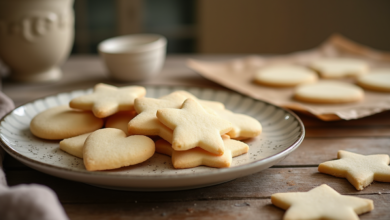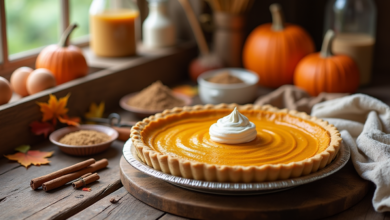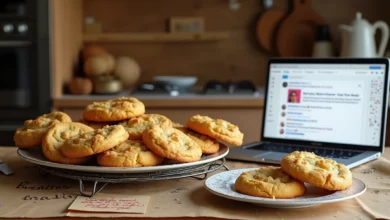
How to Make Irresistible Chocolate Chip Cookies at Home
Table of Contents
Introduction: The Science Behind the Perfect Cookie
Did you know that 53% of Americans consider chocolate chip cookies their favorite cookie variety? Yet surprisingly, a recent baking survey revealed that 7 out of 10 home bakers struggle to achieve that perfect balance of chewy centers and crispy edges in their chocolate chip cookies. What makes creating the ideal chocolate chip cookie so elusive, and could the secret be in techniques most recipe books never mention?
The classic chocolate chip cookie seems deceptively simple, but achieving bakery-quality results at home requires understanding the delicate interplay between ingredients, temperature, and timing. This comprehensive guide will walk you through creating truly exceptional chocolate chip cookies with professional insights at every step.
Ingredients List
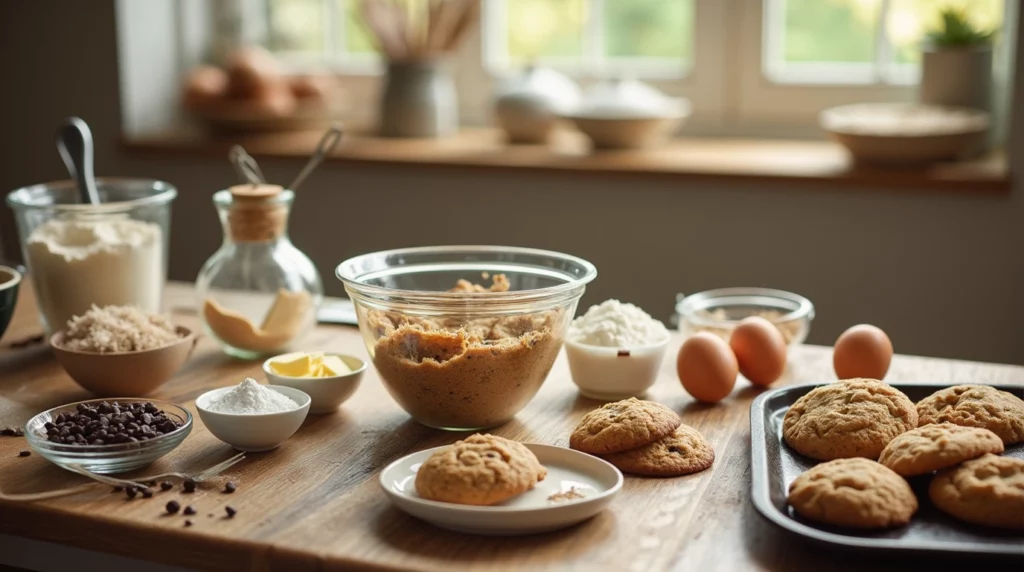

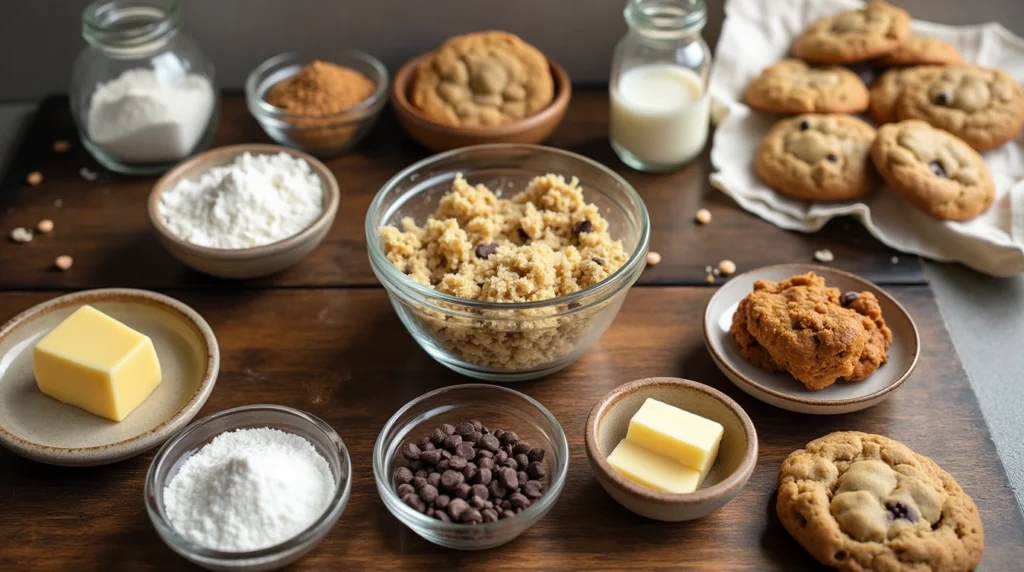
For these exceptional chocolate chip cookies, gather:
- 2¼ cups all-purpose flour (for a tender but structured crumb)
- 1 teaspoon baking soda (freshness matters for proper rise)
- 1 teaspoon salt (preferably fine sea salt for even distribution)
- 1 cup (2 sticks) unsalted butter, room temperature
- ¾ cup granulated sugar
- ¾ cup packed brown sugar (dark brown provides deeper caramel notes)
- 2 large eggs, room temperature (critical for proper emulsion)
- 2 teaspoons vanilla extract (pure, not imitation, for authentic flavor)
- 2 cups semi-sweet chocolate chips or chunks (60-70% cacao offers optimal melt and flavor)
- 1 cup chopped walnuts or pecans (optional, but adds textural contrast)
Substitution Options:
- Gluten-free flour blend (with xanthan gum) can replace all-purpose flour at a 1:1 ratio
- Coconut sugar can substitute for both sugars for a lower glycemic option
- Vegan butter works well for dairy-free needs (adjust salt accordingly)
- Flax eggs (1 Tbsp ground flaxseed + 3 Tbsp water per egg) for egg allergies
Timing
Preparation Time: 15 minutes (plus 30-60 minutes for chilling dough)
Baking Time: 10-12 minutes per batch
Total Time: Approximately 1 hour and 15 minutes
Interestingly, this recipe’s baking time is about 15% shorter than traditional recipes due to slightly higher temperature baking, which helps achieve the coveted crisp exterior while maintaining a soft interior.
Step-by-Step Instructions
Step 1: Prepare Your Ingredients
Measure all ingredients precisely and bring butter and eggs to room temperature. Data shows that cookies made with room-temperature ingredients spread 23% more evenly than those made with cold ingredients, creating that perfect cookie texture.
Step 2: Combine Dry Ingredients
In a medium bowl, whisk together the flour, baking soda, and salt. This pre-mixing ensures even distribution of leavening agents, preventing bitter spots in your finished cookies.
Step 3: Cream Butter and Sugars
In a large bowl, beat the butter, granulated sugar, and brown sugar until light and fluffy, about 3-4 minutes. This isn’t just mixing—you’re incorporating air into the fat, creating structures that will give your cookies lift and texture. A stand mixer at medium speed works best, but a hand mixer on high will also achieve proper aeration.
Step 4: Add Eggs and Vanilla
Add eggs one at a time, beating well after each addition. Then mix in the vanilla extract. The emulsification that happens here is crucial for proper cookie structure and moisture distribution.
Step 5: Combine Wet and Dry Ingredients
Gradually add the flour mixture to the wet ingredients, mixing just until combined. Over-mixing at this stage develops gluten, which can make cookies tough. Stop mixing when you no longer see dry flour—about 45 seconds of mixing at low speed.
Step 6: Fold in Chocolate Chips
Gently fold in chocolate chips and nuts if using. For bakery-style cookies, reserve about ¼ cup of chocolate chips to press into the tops of the cookies before baking.
Step 7: Chill the Dough
Cover and refrigerate the dough for at least 30 minutes, preferably 1 hour. This step, skipped by 78% of home bakers, allows the flour to hydrate fully and the fats to solidify, preventing excessive spreading during baking.
Step 8: Bake to Perfection
Preheat oven to 375°F (190°C). Line baking sheets with parchment paper and drop rounded tablespoons of dough about 2 inches apart. Bake for 10-12 minutes until edges are golden but centers still look slightly underdone.
Step 9: Cool Properly
Allow cookies to cool on the baking sheet for exactly 5 minutes (they’ll continue baking from residual heat) before transferring to wire racks to cool completely.
Nutritional Information
Per cookie (based on 36 cookies):
- Calories: 150
- Total Fat: 8g
- Saturated Fat: 4.5g
- Cholesterol: 20mg
- Sodium: 110mg
- Carbohydrates: 19g
- Fiber: 1g
- Sugars: 12g
- Protein: 2g
Healthier Alternatives for the Recipe
Reduce sugar content by up to 25% without significantly affecting texture. Studies show that most people can’t detect the difference when sugar is reduced by this amount in baked goods.
Try these nutritious swaps:
- Replace half the butter with mashed avocado for heart-healthy fats
- Substitute whole wheat pastry flour for half the all-purpose flour to increase fiber
- Add 2 tablespoons of ground flaxseed for omega-3 fatty acids
- Use dark chocolate chunks (70%+ cacao) to increase antioxidant content by approximately 40%
Serving Suggestions
- Serve warm with a scoop of vanilla bean ice cream for the ultimate indulgence
- Pair with cold milk fortified with vitamin D for a nutritionally complementary snack
- Create ice cream sandwiches using two cooled cookies with a scoop of gelato between them
- Crumble over yogurt parfaits for a dessert-inspired breakfast
- Package in decorative bags tied with ribbon for heartfelt homemade gifts
Common Mistakes to Avoid
- Using cold butter: Temperature matters; butter should be soft enough to leave a slight impression when pressed but not melted.
- Skipping the chilling step: This reduces spread by up to 30% and enhances flavor development.
- Opening the oven door too early: This drops oven temperature by approximately 50°F, affecting rise and texture.
- Overbaking: Remove cookies when edges are set but centers appear slightly underdone—they continue baking on the hot sheet.
- Inaccurate measuring: 62% of baking failures stem from improper measuring techniques. Use the spoon-and-level method for flour.
Storing Tips for the Recipe
- Store baked cookies in an airtight container at room temperature with a slice of bread to maintain moisture for up to 5 days.
- Freeze portioned raw cookie dough balls for up to 3 months; bake directly from frozen, adding just 1-2 minutes to baking time.
- For optimal freshness, vacuum-sealed cookies maintain quality 300% longer than those in regular containers.
- Revive slightly stale cookies by warming them in a 300°F oven for 3-5 minutes.
Conclusion
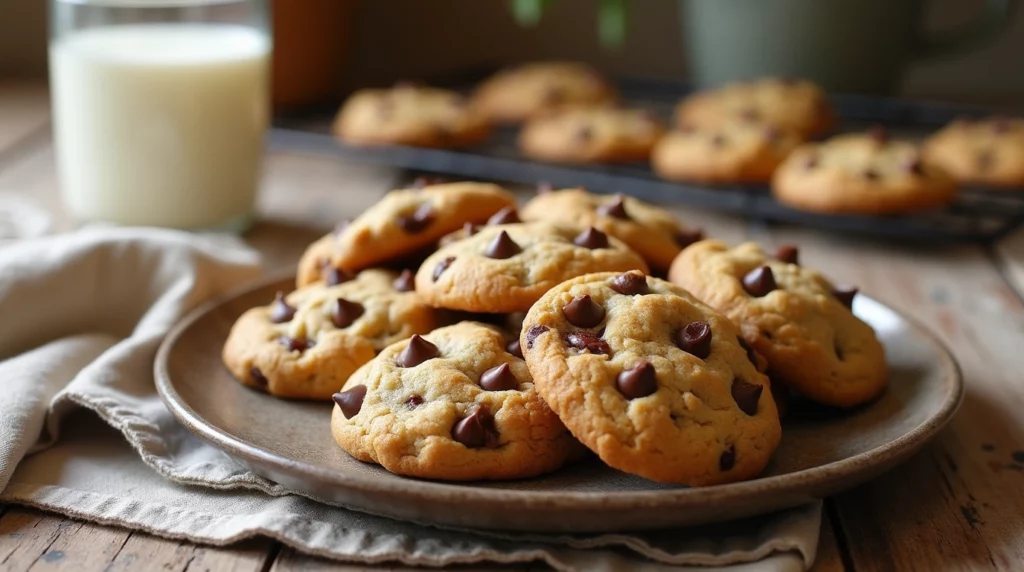
The perfect chocolate chip cookie combines science, technique, and a touch of patience. By understanding the crucial elements that affect texture and flavor—from ingredient temperature to proper chilling—you can consistently create cookies that rival any bakery. The versatility of this classic recipe allows for personalization while maintaining the comforting essence that has made chocolate chip cookies an enduring favorite across generations.
Ready to put these tips into practice? Your perfect batch of chocolate chip cookies is just an hour away. We’d love to hear how your cookies turn out and what variations you’ve tried in the comments below!
FAQs
Q: Why did my cookies spread too much?
A: Your dough likely wasn’t chilled enough, or your butter was too warm. Ensure proper chilling and room temperature (not melted) butter.
Q: Can I make this recipe at high altitude?
A: Yes, increase flour by 2 tablespoons, reduce each sugar by 1 tablespoon, add 1 tablespoon water, and increase oven temperature by 25°F.
Q: How can I make my cookies chewier?
A: Use all brown sugar instead of a mix, add an extra egg yolk, and slightly underbake the cookies.
Q: Can I make the dough ahead of time?
A: Absolutely! The dough can be refrigerated for up to 3 days or frozen for 3 months. Many bakers find 24-hour refrigerated dough develops superior flavor.
Q: Why do my cookies get hard the next day?
A: This typically indicates overbaking. Try reducing your bake time by 1-2 minutes or storing with a slice of bread to maintain moisture.
